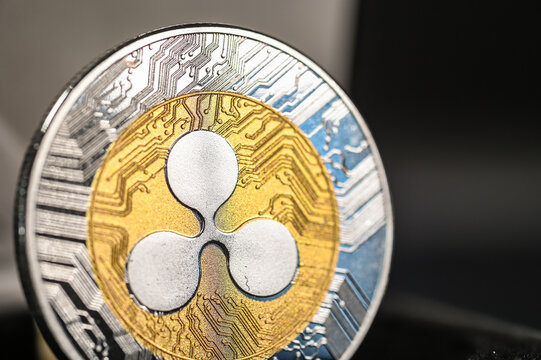The world of cryptocurrency is often shrouded in a mix of mystery and innovation, capturing the attention of investors, technologists, and curious observers alike. Among these digital currencies, XRP stands out not only for its unique technology but also for the complexities surrounding its locked escrow tokens. Recent remarks by Ripple’s Chief Technology Officer, David Schwartz, have sparked intense discussions. These comments have brought new perspectives on what being “locked” truly means in the XRP ecosystem, raising questions about market supply, institutional strategies, and potential impacts on the digital asset landscape.
Understanding XRP’s Locked Escrow Tokens: New Insights from Ripple’s CTO
Ripple’s Escrow Mechanism: Flexibility in Legal Rights
Ripple’s system for managing XRP involves a significant number of tokens being held in escrow accounts. As of now, about 35 billion XRP are in such accounts, originally thought to be untouchable until their scheduled release. However, in a recent social media discussion, Ripple CTO David Schwartz clarified that while these tokens cannot enter circulation immediately, Ripple retains the ability to sell the rights to these future tokens. This means, while the tokens themselves remain inaccessible, the rights associated with them can be traded or transferred.
This revelation came in the wake of a debate led by software engineer Vincent Van Code, who highlighted discrepancies in how market caps are perceived between different cryptocurrencies like Bitcoin and XRP. By emphasizing the ability to trade these legal rights, Schwartz illuminated new avenues for leveraging escrowed XRP without directly affecting the circulating supply.
The Role of Escrow in Institutional Strategy and Market Dynamics
Further insights by Vincent Van Code delve into Ripple’s decision-making regarding these escrow tokens. Despite holding a massive reserve through escrow, Ripple continues to purchase XRP from the open market. The reasoning behind this strategy lies in their aim to regulate liquidity across various financial institutions. These institutions require a stable supply of XRP to facilitate transactions, and Ripple’s strategic purchases help ensure this stability.
The escrow system, therefore, plays a pivotal role not just in supply control but also in fostering institutional confidence. As XRP Ocean, a decentralized protocol on the XRP Ledger, explained, the tokens in escrow are crucial for permissioned domains and institutional liquidity pools. This indicates that the on-exchange supply for retail investors is separate, ensuring that market volatility is minimized.
What Does This Mean for Investors?
For investors, understanding Ripple’s mechanism with its escrowed XRP is essential. With only a fraction of these tokens entering the market monthly, Ripple’s approach suggests a long-term strategy focused on sustainability and gradual growth. This nuanced approach highlights the complexity of the crypto market, where supply control and institutional engagement are intertwined with the broader dynamics of adoption and technological advancement.
FAQs on XRP and Escrow Tokens
Can Ripple release all escrow tokens at once?
No, Ripple cannot release all escrowed XRP at once. The tokens are scheduled to be released gradually, with about one billion XRP becoming available each month. This mechanism helps manage market supply and maintain price stability.
What impact does trading escrow rights have on XRP’s price?
Trading the rights to escrowed XRP does not directly affect the circulating supply, which helps mitigate immediate price fluctuations. However, the strategic sale of these rights can influence market perceptions and future supply expectations.
How does Ripple’s purchase strategy affect liquidity?
Ripple’s strategy of purchasing XRP from the open market ensures consistent liquidity for institutional use. This maintains a balanced supply, supporting the needs of banks and financial entities requiring XRP for various transactions and services.
By shedding light on these aspects of XRP’s escrow system, stakeholders are better equipped to grasp the complexities and opportunities within the cryptocurrency market. Understanding these dynamics is crucial for making informed investment decisions in this ever-evolving digital landscape.

